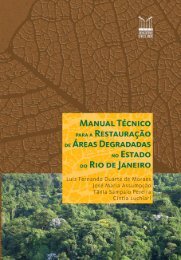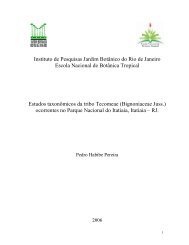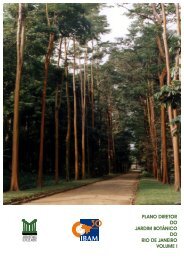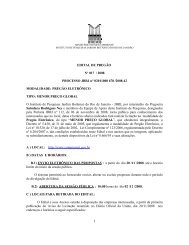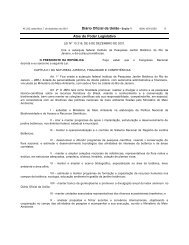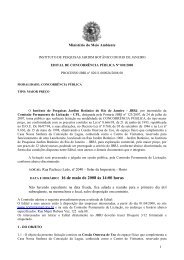anatomia do lenho e dendrocronologia de lianas da famÃlia ...
anatomia do lenho e dendrocronologia de lianas da famÃlia ...
anatomia do lenho e dendrocronologia de lianas da famÃlia ...
You also want an ePaper? Increase the reach of your titles
YUMPU automatically turns print PDFs into web optimized ePapers that Google loves.
45<br />
1991). Two liana censuses <strong>de</strong>veloped in Atlantic Forest biome show Leguminosae as the<br />
second and the third most representative family in species number for studied ranges<br />
(Resen<strong>de</strong> & Ranga, 2005).<br />
Brazilian Atlantic Forest has high species diversity and number of en<strong>de</strong>mics species, but<br />
retains only approximately 7,5 % of its original extension and it is one of the highest global<br />
priorities for conservation (Morellato & Had<strong>da</strong>d, 2000; Myers et al., 2000). This biome<br />
should be consi<strong>de</strong>red a mosaic comprising several types of vegetation, related with several<br />
environments (Oliveira-Filho & Fontes, 2000; Scarano, 2002). The bulk of Brazilian Atlantic<br />
Forest is on tropical region.<br />
Growth rings analysis would contribute with temporal information that can be used in studies<br />
of growth, wood production, age structure, population and forest dynamics, forest<br />
management, conservation and restoration (Jacoby, 1989; Eickstein, Sass & Baas, 1995; Priya<br />
& Bhat, 1999; Braker, 2002; Worbes, 2002; Grau, Eas<strong>da</strong>le & Paolini, 2003; Worbes et al.,<br />
2003; Brienen & Zui<strong>de</strong>ma, 2006). Then, if some <strong>lianas</strong> have distinct growth rings, this might<br />
contribute to the knowledge of the growth in <strong>lianas</strong>, the un<strong>de</strong>rstanding of the tropical forest<br />
dynamics and with sustainable management.<br />
In this study, the anatomical features of eight liana species were analysed from a wellpreserved<br />
remnant of Atlantic Rain Forest, placed in mountain region (Serra <strong>da</strong> Mantiqueira –<br />
Itatiaia Massif). This species represent almost all <strong>lianas</strong> of Leguminosae family recognized<br />
from this place and registered in Programa Mata Atlântica <strong>da</strong>ta base. Some of the questions<br />
that we try to answer are: Do <strong>lianas</strong> have growth rings? What are the anatomical features that<br />
distinguish the growth rings? Species with cambial variants have growth rings? Some of<br />
studied species can be used in future researches of <strong>de</strong>ndrochronology?



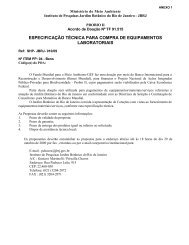
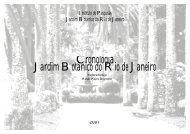
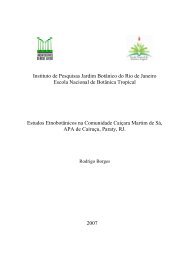
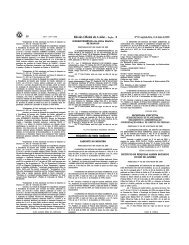
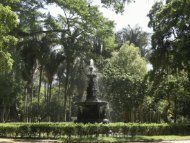
![Memorando nº [Número do memorando/DAMF-RJ/Nome da Unidade]](https://img.yumpu.com/43163661/1/184x260/memorando-na-namero-do-memorando-damf-rj-nome-da-unidade.jpg?quality=85)
